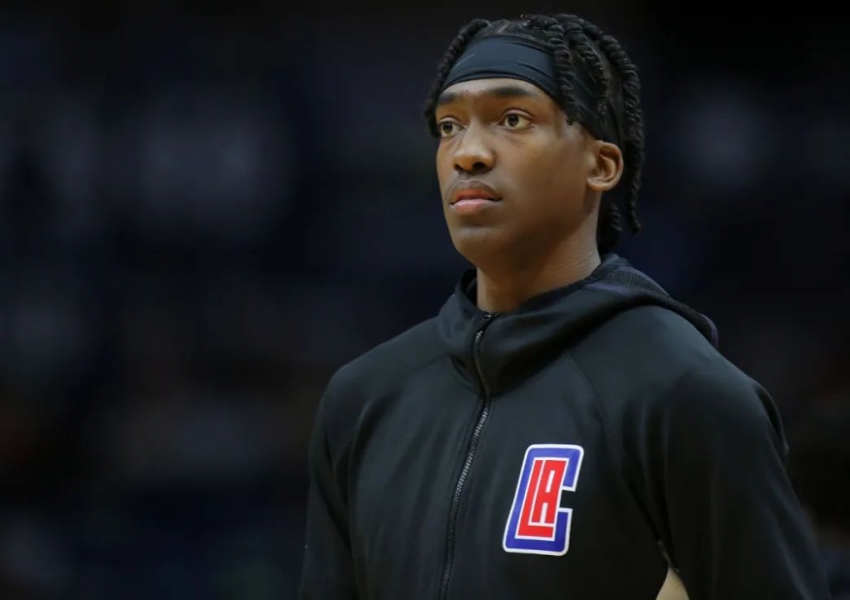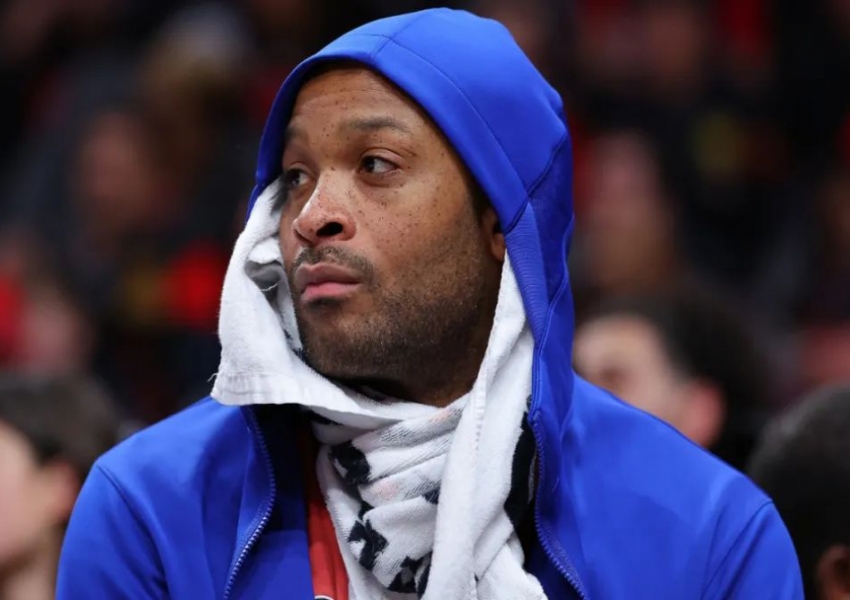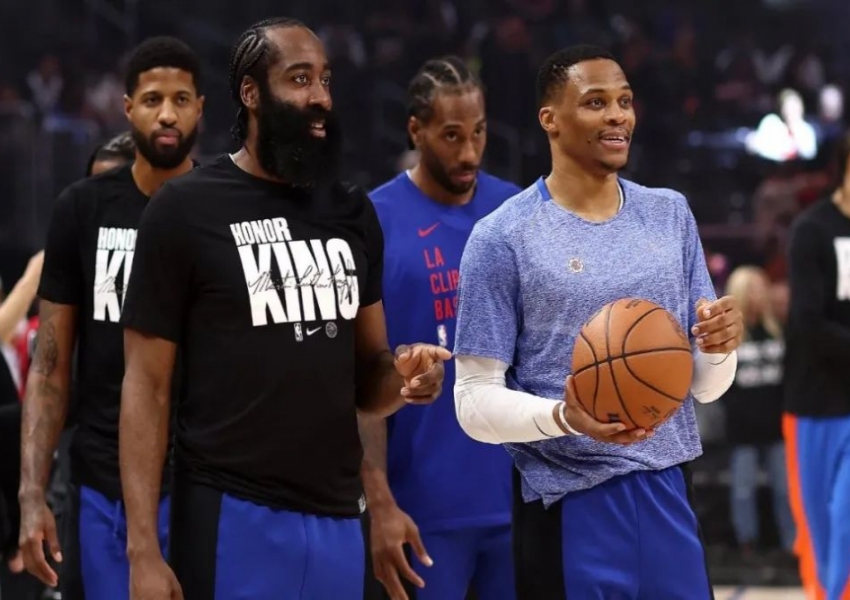It's Not Over! Clippers Face Two Major Issues: What to Do with Tucker and Mann?
The Los Angeles Clippers have been busy this offseason, making significant moves to reshape their roster. Among the most notable changes was the trade involving Russell Westbrook. In a deal with the Utah Jazz, the Clippers sent Westbrook, $4.3 million in cash, and a 2030 second-round pick swap to Utah. In return, they acquired Kris Dunn, who was signed-and-traded on a new three-year, $17 million contract with the last year being a team option.

Kris Dunn, the fifth overall pick in the 2016 NBA Draft, has had a career marred by injuries and inconsistent play. At one point, he was even waived and relegated to the G League. However, over the past two seasons with the Jazz, Dunn has managed to capitalize on his opportunities, showcasing his skills on both ends of the floor, particularly on defense. While Dunn's career might not match the heights of Westbrook's, he appears to be a better fit for the current Clippers roster.

Despite Dunn's arrival, the Clippers' offseason work is far from complete. There are two significant issues they still need to address: the situation with P.J. Tucker and the contract extension for Terance Mann.

The P.J. Tucker Conundrum
P.J. Tucker signed a three-year, $33 million contract with the Philadelphia 76ers in 2022. He was then traded to the Clippers last season as part of the James Harden deal. Tucker’s contract will enter its final year next season, with a salary of $11.54 million. However, Tucker's performance last season did not justify his hefty salary. He played in only 28 games for the Clippers, averaging 1.6 points and 2.5 rebounds in 15.0 minutes per game, shooting 35.6% from the field and 36.7% from three-point range.
Last season, the Clippers experienced a remarkable turnaround, climbing from the bottom of the Western Conference to the top. A significant part of this success was attributed to Westbrook’s move to the bench. Additionally, another key factor was Tucker being benched for 37 consecutive games, during which the Clippers won 29 games. Once a valuable asset, Tucker now seems to be past his prime. Besides his declining performance, Tucker has also been vocal about his desire to be traded, expressing his frustration publicly multiple times. This has led to a $75,000 fine from the NBA.
The Clippers have been actively shopping Tucker, but due to his age, contract, playing style, and current output, there have been no takers in the market. Tucker has become a ticking time bomb in the Clippers' locker room. If he remains on the roster in his contract year, it could create a toxic atmosphere.
Terance Mann’s Contract Dilemma
After acquiring Dunn, the Clippers now have seven guards on their roster: James Harden, Norman Powell, Terance Mann, Bones Hyland, Kevin Porter Jr., Dunn, and Cameron Christie. Among these players, Harden and Powell are unlikely to be moved, while Porter Jr., Dunn, and Christie are recent additions. This leaves Hyland as the most likely candidate to be traded or waived. Mann, despite his apparent stability, also presents a contract challenge.
In 2021, Mann signed a two-year, $22 million extension with the Clippers. This contract will enter its final year next season, with a salary of $11.42 million. According to the NBA's collective bargaining agreement, Mann is eligible for an early extension this summer, which could be worth up to four years and $81 million. Last season, Mann played in 75 games, starting 71 of them, and averaged 8.8 points, 3.4 rebounds, and 1.6 assists in 25 minutes per game, shooting 51.5% from the field, 34.8% from three, and 83.2% from the free-throw line, with a true shooting percentage of 61.5%. In the playoffs, with Kawhi Leonard injured, Mann’s playing time increased to 31.2 minutes per game, and he averaged 9.3 points, 5.0 rebounds, and 1.8 assists, shooting 45.5% from three with a true shooting percentage of 56.5%.
The Clippers have always valued Mann, who has shown flashes of brilliance, notably in the 2021 playoffs when he scored 39 points in a game against the Jazz, helping the Clippers reach the Western Conference Finals for the first time in franchise history. However, Mann’s ball-handling and shooting are inconsistent, and he lacks playmaking ability. His size makes him a tweener, unable to fully commit to either the shooting guard or small forward positions, and he’s not suited to play power forward, a position the Clippers desperately need to fill. A salary of around $11 million per year seems fair for Mann, but a significant increase to $20 million per year might be too steep.
Moving Forward
The issues surrounding Tucker and Mann need to be resolved for the Clippers to have a stable and cohesive team next season. If these problems persist, they could face internal strife and instability, affecting their performance on the court.
Reflecting on the Clippers' offseason moves, they have extended Harden's contract, let go of Paul George, signed Nic Batum, acquired Kevin Porter Jr., added Derrick Jones Jr. and Mo Bamba, traded Westbrook, and acquired Dunn through a sign-and-trade deal. Next on their agenda are resolving Tucker's status and negotiating Mann's extension. Despite these changes, the star power of the team has diminished, and with George's departure, their overall strength has undoubtedly declined. The Clippers have often been mocked for being "offseason champions," but this time, even that title seems out of reach given the current landscape of the Western Conference and the league.
In conclusion, the Clippers' offseason is far from over. They still have significant hurdles to overcome in dealing with Tucker and Mann. How they navigate these challenges will determine their stability and success in the upcoming season. The Clippers must find a way to offload Tucker’s contract and address Mann’s extension in a manner that keeps the team competitive and cohesive. Only then can they hope to achieve their goals and contend in a fiercely competitive Western Conference.
Copyright Statement:
Author: focusnba
Source: FocusNBA
The copyright of this article belongs to the author. Reproduction is not allowed without permission.
Recommended Blog
- He's Back! Morant's Bold Claim: Confirming the 2024-25 NBA Championship
- Remember Him? Why 25-Year-Old Ex-Laker Lonnie Walker is Still Without a Team
- Refusing to Play for China? Zhao Weilu's Bold Decision Shakes the Basketball World
- 6-for-1 Trade! Clippers Should Move Leonard Quickly
- $110 Million for Three Years? The Inside Story of Paul George's Departure: This Time, You Can't Blame Him
- Zhou Qi and Fanbo Zeng Team Up? Goodbye, 19 Teams! Guangdong Stays Unchanged
- $2.6 Million for a Year! S-Tier Move! Did the Bucks Snag the Best Value in the NBA?
- A $16 Million Pay Cut: Klay and Harden to Join the Lakers’ New Big Four?
- Everyone Move Aside! He Became the Leader in His Second Year, Even Pushing a 24-Year-Old Prodigy to the Trade Block
- Where’s the Talent? Where’s the Potential? From the Warriors' "Crown Prince" to the League's Bottom Rung, It Only Took Him 4 Years
Hot Blog
- Tension in New York? Mikal Bridges Calls Out Thibodeau’s “Plantation-Style” Rotation!
- Kevin Durant = Three First-Round Picks? In Just Two Years, the Suns Lost Big!
- Major Decline! What Is De'Aaron Fox’s True Level with the Spurs?
- Completely Out of the Rotation! Why 25-Year-Old Cam Reddish Can't Get on the Court Anymore
- A Miraculous Buzzer-Beater—But What Level Is Kawhi Leonard Really At Now?
- 4,000 Threes! Just How Impossible Is Stephen Curry’s Latest Record?
- $293M Supermax and an MVP? Is There Any Doubt Left for Shai Gilgeous-Alexander?
- $110 Million Over Two Years—Butler Was Worth Every Penny
- $418M for Luka Dončić? Is the Lakers' New Star Worth It?
- 31-21-22! Did Jokic’s Historic Triple-Double Just Reignite the MVP Race?